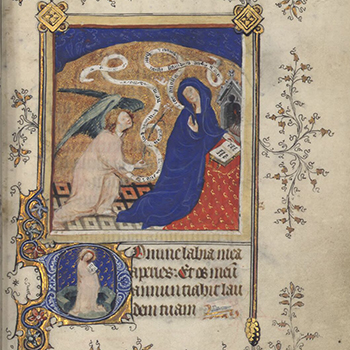Books of hours as codified compilations of compilations
Textual networks and hybridization of uses in the Low Countries
Keywords:
Books of hours, Middle Ages, Manuscript studies, Liturgy, Philology, Low CountriesAbstract
Books of hours were the medieval best-seller. Imitating the model of liturgical books and intended for the faithful, these devotional manuscripts contain a common core of offices and texts, and they seem to have a standardized content. However, the order of the main sections as well as, within the offices, the choice and the order of the chants, readings and orations, vary according not only to the liturgical source, but also to the place of production and certainly to the market targeted and the choices of the client. This contribution analyses networks of manuscripts and of texts. At the level of texts and liturgical uses, we highlight that geographical proximity or farther-reaching communications produced textual commonalities (e.g. Germany and Southern France for the Hours of the Virgin, Flanders and Scandinavia for the office of the Dead). At the level of the manuscript, patrons could not only juxtapose texts for different uses, but also modify the expected contents. Codes specific to one institution may be reproduced faithfully, but also give way to hybridization. This phenomenon is characterized, for example, by switches between pieces, by insertions of pieces from another use into a well-identified set, or by the implementation of textual variants.

Downloads
Published
How to Cite
Issue
Section
License
Copyright (c) 2023 Dominique Stutzmann, Louis Chevalier

This work is licensed under a Creative Commons Attribution-NoDerivatives 4.0 International License.
A Creative Commons Attribution-NoDerivatives 4.0 (CC BY-ND 4.0) license applies to all contents published in JHNR. While articles published on JHNR can be copied by anyone for noncommercial purposes if proper credit is given, all materials are published under an open-access license with authors retaining full and permanent ownership of their work. For details please consult the Open Access and Copyright Notice.

